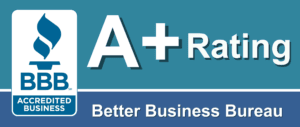Why Choose Membrane Roofing?
Membrane roofing systems are a popular choice for low-slope and flat roofs, and they are known for their durability, energy efficiency, and cost-effectiveness. At Stonebridge Roofing, we specialize in various types of membrane roofs, providing top-quality installation and maintenance services for both residential roofs and commercial properties. Whether you’re looking to install a new roof or replace an existing one, our expert roofers are here to guide you through the best membrane roofing options to suit your needs.
Types of Roof Membranes We Offer
1. Built-Up Roofing (BUR)
Built-up roofing, commonly referred to as BUR, is a traditional and time-tested membrane roofing system composed of multiple layers of bitumen and reinforcing fabrics. These layers are topped with a protective coating or gravel, creating a strong, durable roof membrane with excellent waterproofing and UV resistance.
Benefits:
BUR is ideal for low-slope roofs and provides excellent fire resistance and impact resistance due to its multiple layers. This roofing system is known for its durability, making it a preferred choice for commercial buildings that need a robust and long-lasting solution.
Installation Process:
BUR involves applying alternating layers of bitumen and felt, which are then covered with a protective top layer. The installation can be ballasted, asphalt, or cold-applied, depending on the specific requirements of the building and the desired finish.
Lifespan:
With proper maintenance, BUR can last 15-30 years, providing a cost-effective solution for commercial roofing.
2. Ethylene Propylene Diene Monomer (EPDM)
EPDM, commonly known as a rubber roof, is a synthetic rubber roofing material that is widely used for flat roofs. This thermoset membrane is known for its flexibility, UV resistance, and ease of installation, making it a popular choice among homeowners and commercial property owners alike.
Benefits:
EPDM roofs are highly durable, resistant to weathering, and offer excellent waterproofing capabilities. They are available in both black and white, with the white option providing enhanced energy efficiency by reflecting sunlight and reducing cooling costs.
Installation Process:
EPDM membranes can be installed fully adhered, mechanically fastened, or ballasted. The seams are sealed with adhesive or heat-welded, providing a strong and reliable roof deck.
Lifespan:
EPDM roofs have a lifespan of 20-30 years, depending on the thickness (measured in mils) and the quality of the installation.
3. PVC Roofing Membranes
Polyvinyl chloride (PVC) membranes are known for their exceptional durability, flexibility, and resistance to chemicals, grease, and fire. PVC is a thermoplastic membrane, meaning it is heat-welded during installation to create strong, watertight seams that provide superior waterproofing.
Benefits:
PVC roofing membranes offer excellent fire resistance, energy efficiency, and UV protection. They are particularly suited for commercial roofing applications where exposure to chemicals or oils is a concern, such as restaurants and manufacturing facilities.
Installation Process:
PVC membranes are installed using a heat-welded process, which ensures strong and reliable seams. They can be installed over existing roof systems with proper underlayment, making them a versatile option for roof replacements.
Lifespan:
PVC roofing systems can last 20-30 years with regular maintenance, offering long-term performance and protection for commercial buildings.
4. Thermoplastic Membranes (TPO)
Thermoplastic polyolefin (TPO) membranes are a type of single-ply membrane material that combines the benefits of EPDM and PVC. TPO is a highly reflective and energy-efficient membrane that is resistant to UV rays, chemicals, and punctures, making it one of the most popular choices for modern roofing.
Benefits:
TPO roofing systems provide excellent heat and UV resistance, contributing to lower energy costs. TPO is a versatile option that offers fire resistance, flexibility, and a variety of installation methods, making it ideal for both residential and commercial applications.
Installation Process:
TPO membranes are typically heat-welded to create durable, leak-proof seams. They can be installed as fully adhered, mechanically fastened, or ballasted, depending on the building’s needs and structure.
Lifespan:
With proper installation and maintenance, TPO roofs can last 15-25 years, making them a cost-effective and sustainable choice.
5. Modified Bitumen
Modified bitumen roofing systems are similar to BUR but incorporate modern polymer-modified membranes for enhanced durability and flexibility. These roofs are known for their excellent weather resistance and ability to withstand extreme temperatures.
Benefits:
Modified bitumen membranes are highly durable, provide excellent waterproofing, and are available in various installation methods, including self-adhering and torch-applied. These membranes are particularly effective for roofs with high-traffic areas or where extra protection is needed.
Installation Process:
Modified bitumen roofs can be installed using torch-applied, cold adhesive, or self-adhering methods. The membranes are typically layered with a base sheet and a cap sheet, creating a robust and multi-layered roof system.
Lifespan:
These roofs can last 20-30 years, offering a reliable and long-lasting roofing solution with a proven track record in the industry.
Why Choose Stonebridge Roofing for Membrane Roofs?
Contact Stonebridge Roofing Today for a Free Quote
Ready to explore the benefits of a membrane roof for your property? Contact Stonebridge Roofing today to schedule a consultation and receive a free quote. Our team is here to help you select the best roofing system for your needs, ensuring a seamless installation process and lasting results.
Stonebridge Roofing is your trusted partner for all types of membrane roofing systems. Let us help you protect and enhance your property with our high-quality roofing solutions designed for lasting performance.



